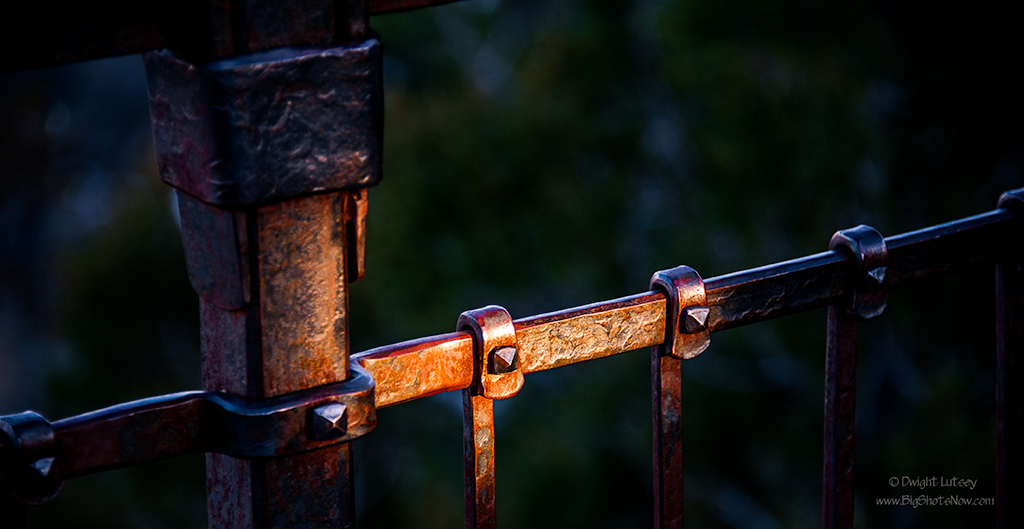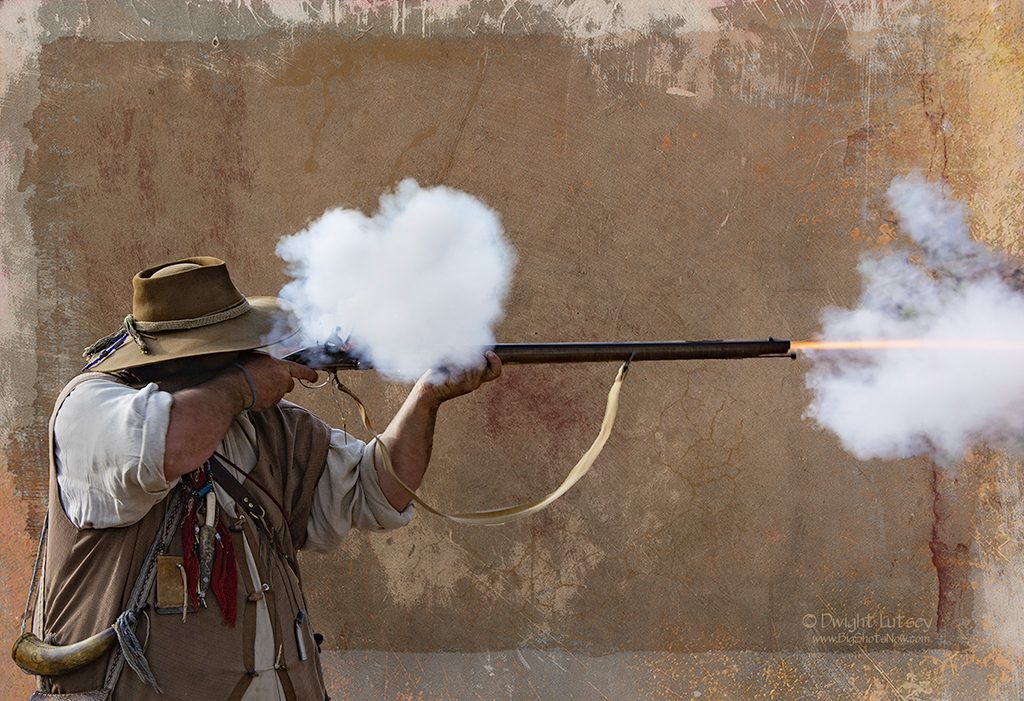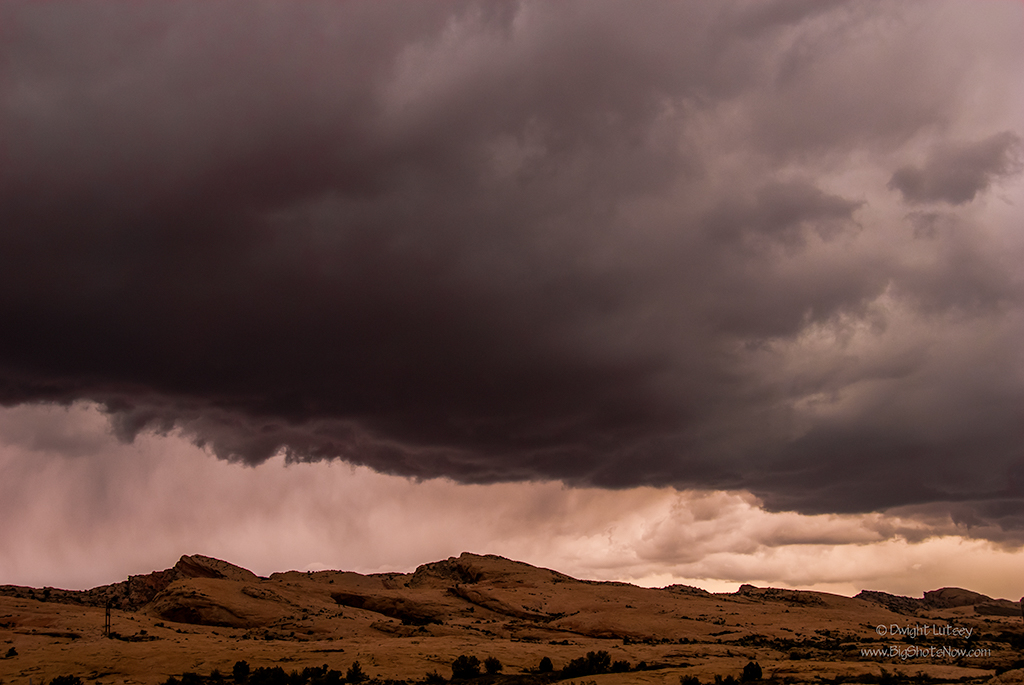
It was a cold, cold Christmas Eve in the Grand Canyon. There was no wind but that just intensified the cold, giving everything a deep blue look. The lodge was still a half mile away and the lights beckoned me forward, each step closer to the beautiful yellow warmth radiating from each window across the canyon, that far off rim seeming weeks away.
The light was nearly gone and my cameras felt like bricks as they weighed against my chest as if they each weighed 50 lbs. a piece. After a full day’s shooting their weight begins to double or triple as you make the long trek back home. When it is dark out and you’re cold and you still have a long walk in front of you, you begin to see things that you might normally just walk by, never noticing their beauty because you have places to go and things to do. But now with nothing else to occupy you other than placing one foot in front of the other, these little things become visible and more intriguing.
Like this handsome wrought iron fence. The park service in its infinite wisdom placed this fence along the edge of the canyon to keep the unwary from rushing up and accidentally hurtling themselves over the side. Apparently tired of hearing the screams as the unlucky made the mile long descent to the canyon floor below, they erected this barrier to promote public safety. They needed the barrier of course, what with the tendency of the public nearly out of their minds with the beauty of Canyon, to save them from themselves, but they didn’t have to make it beautiful. But they did.
As I wearily approached, the very last ray of the setting sun broke through the high-flying clouds to illuminate just this small portion of the fence. A celestial spotlight saying “Look here. Look at this thing that man has made.”. Each blow from the hammer visible on its surface, the resulting texture with the patina from long exposure to the elements a ripple on the surface of the metal. The top edge of the rail rounded over from the countless caresses of unnoticing hands rubbing its surface as the crowds stood and looked out over the majesty of the Grand Canyon. It would be easy to not notice this small bit of detail that accents the grandeur that is this spectacular place, this Grand Canyon. And most did not see this fence as such, it being that utilitarian device it is, it just kept them and theirs safe as it was supposed to.
But things look different as I mentioned before, when you are cold and hungry and far from home. Still when you are given a present like this, this tiny showcase of fleeting light and dark and texture and patina, plus the ability to see something common in a new way, a way that shows you the true beauty of everyday things in everyday life, you stop and take it in and marvel that these everyday things in our life can be so beautiful.




You must be logged in to post a comment.